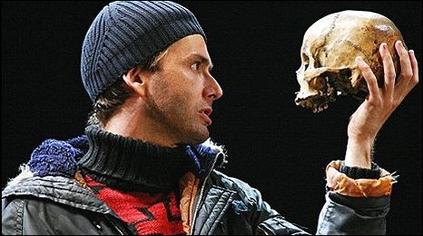Over the past few months our classroom has looked at a plethora of YA books with potential for teaching in the classroom. These have included Divergent, The Hobbit, Alice I think, A Thousand Shades of Blue, The Perks of Being a Wallflower, Monkey Beach, Audacious, The Sandman, Thirteen Reasons Why, Maus, Speak and Fahrenheit 451. We have found some pose more difficulties for teaching than others, but oftentimes, the content, style or medium which also makes them problematic is an advantage in another light. I have realized that if possible, a diversity of choice in the classroom should be allowed. This will open up the range of choice and personal connection of students to books (this strategy is encouraged in the grade 10 BC ELA IRP (p. 27). Over the past months, four reoccurring features have stood out which give YA readers high merit for fostering a love of literature in contemporary students. (also a mandate of the grade 8-12 BC ELA IRP [p. 17]). These features are as follows: the literature’s ability to encourage reluctant readers; the literature’s ability to relate with the experiences of Young Adults; the literature’s ability to introduce new topics, language, or genres of interest; and the literature’s ability to integrate with the wider multi-media world.
To exemplify these relationships I have selected two of the books we have discussed recently: The Book Thief and The Hunchback Assignments.


Although it deals with serious themes, the language of The Book Thief is simple enough for lower-lever readers, while compelling enough to encourage the turning of pages. The fact that the book has been adapted to film can create visual links to this end and the presence of an omniscient and often humorous narrator acts as a meta-cognitive guide through the chronology of the novel. The Hunchback Assignments is a short book, so encouraging reluctant readers by the incentive of completion. It also employs the fantastical elements of mystery, super powers, quick moving plot and frequent action. Further, for a reluctant reader, a Graphic Novel with the characters from the book series is due to be released, and could serve as a conduit to the text through visual cues. Pam Cole (2009) writes that in "our efforts to create readers, we can actually squelch desire by forcing students to read books they dislike" (p. 38). Why do that, if we can avoid it?
Both The Book Thief and The Hunchback Assignments provides the relatability of a young protagonist who is experiencing drastic changes in their life, and which provides relational elements to young readers. The Book Thief’s protagonist deals with a change of home and family and encounters difficult relationships and tragic moments. The Hunchback Assignment’s protagonist is forced to explore the world without the help of his surrogate parents and has to cope with a deformity which makes him appear different than most people. These plot elements of both books provide themes that Young Readers can relate and make connections to from their own lives. John Guthrie (2008) writes that "[s]tudents who read for internal reasons (interest, plaeasure, favorite topics) read a lot and achieve highly" (p. 2).
The potential for The Book Thief to open pathways of new interest is huge, especially if combined cross-curricularly with social studies/History. The book deals with elements of WW2 with factual elements coming into play throughout the book. The Hunchback Assignments, though steam punk by genre, still has many factual connections to the City of London England, and makes frequent references and allusions to other literatures. By means of these connections in both books, there is the possibility for student’s understanding of topics to be reinforced cross-curricularly and for them to find reasons to enjoy reading. According to R. Jobe (2002), "[c]onnecting to interest is more powerful than anything else we can do as teachers" (p. 20).
Both The Book Thief and the Hunchback Assignments provide possibilities for students to interact multi-modaly in a way that can connect with their multi-media world. Film and Graphic novel adaptations have been mentioned, but Hunchback author Arthur Slade has set up a web page featuring the multi-modal elements of video, audio, podcast, forum and other interactive elements. Likewise, shmoop.com offers a web page with links for readers to make wider connections with The Book Thief to internet resources on topics introduced through the book. Tracy Tarasiuk (2010) has written accurately that "[t]he combination of reading, writing and technology presents unique opportunities to improve and address the contemporary literacy needs of adolescents." (p. 543)
What I’ve realized is that the above reasons to incorporate YA lit such as The Book Thief and The Hunchback Assignments–or any other for that matter–is not just that it qualifies according to the above criteria, but that it probably does so better than much of the ‘traditional’ literature that is taught in the classroom. Something to keep in mind.
I wish I had had more choice of novels to read in my high school classroom, and that those novels had more relevance to my life. As a potential teacher, the last few months of discovery has given me much to think about in regards to how I can encourage a love of reading in YA readers, with YA lit.
Works Cited:
British Columbia Provincial Board of Education, IRP Guidelines. English language arts grade 10
British Columbia Provincial Board of Education, IRP Guidelines. English language arts grade 8-12
Cole, P. (2009). Young adult literature in the 21st century. Boston: McGraw Hill.
Guthrie, J. (2008). Engaging adolescents in reading. Thousand Oaks: Corwin Press.
Jobe, R. (2002). Info kids : How to use nonfiction to turn reluctant readers into enthusiastic learners. (pp. 16-22). Markham:Pembroke Publishers.
Tarasiuk, T. J. (2010). Combining traditional and contemporary texts: moving my english class to the computer lab. Journal of Adolescent and Adult Literacy, 53(7), 543-552. doi: 10.1598














